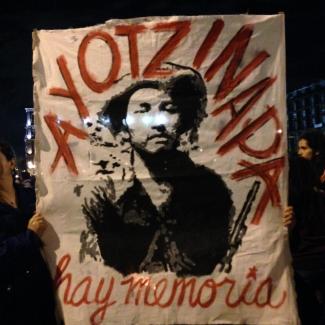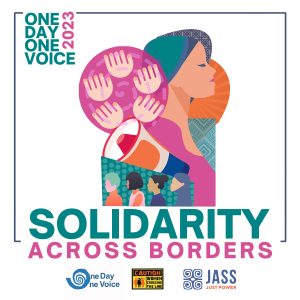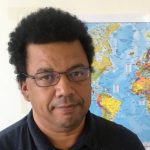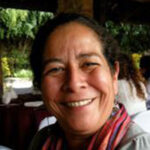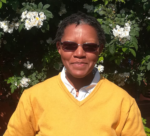Despite international pressure, public outrage and a digging effort that has unearthed 60 unidentified graves, the forty-three students who disappeared in Ayotzinapa, Mexico on September 26 are yet to be found. The students disappeared after police ambushed their caravan as they headed to a march to protest cuts in the rural education budget. Six people were killed and one was found dead nearby with visible signs of torture. The investigations have not only unearthed nearly a dozen mass graves nearby but also finally revealed to the outside world what Mexicans know well: the deep level of complicity between the government and organized crime.
In response, JASS—led by the team in Mexico—joined many organizations in demanding for the immediate location of the missing students. Working closely with the Nobel Women’s Initiative, JASS is currently hosting Nobel Peace Laureate, Jody Williams, who will be joining a global call to action march and meeting with government officials. This follows on a week in Washington, DC where JASS worked with Centro Prodh, the Tlachinollan Human Rights Center, the Center for Economic Policy and Research, WOLA and others to organize hearings at the Inter-American Commission for Human Rights and a Congressional Briefing to demonstrate that this disappearance is part of a larger pattern of systematic targeting of those who speak out for their rights or against injustice. Since 2007, more than 30,000 people have disappeared and more than 100,000 have been murdered in Mexico.
October 26, 2014 marked one month since the forced disappearance of the forty-three students from the “Raúl Isidro Burgos” Rural School, the extrajudicial execution of three students (Julio César Ramírez Nava, Julio César Mondragón, and Daniel Solís Gallardo), and the killing of another three people, among them a child located in the county of Ayotzinapa. These actions came at the hands of the municipal police of the city of Iguala, Guerrero. The same police operation resulted in gunshot injuries to twenty students of the same school, and to student Aldo Gutiérrez, who since then has been hospitalized in a coma and is reportedly brain dead.
In spite of the ongoing demonstrations by civil society both domestically and internationally, the government has given no definitive explanation regarding the students’ whereabouts. President Peña Nieto has offered only evasive responses; Governor Aguirre has been removed from his post; and the mayor of the city of Iguala, José Luis Abarca, initially fled with his wife but is now being detained and questioned. For the Mexican people, however, it is clear that the government is responsible.
Iguala Mayor Abarca has been linked to a number of sordid occurrences that have yet to reach international news, such as the shooting death of his rival for the mayor’s post a year and a half ago. Abarca also had eleven relatives on the payroll, including his wife, María de los Ángeles Pineda, whose brothers are reportedly linked with drug traffickers and organized crime groups.
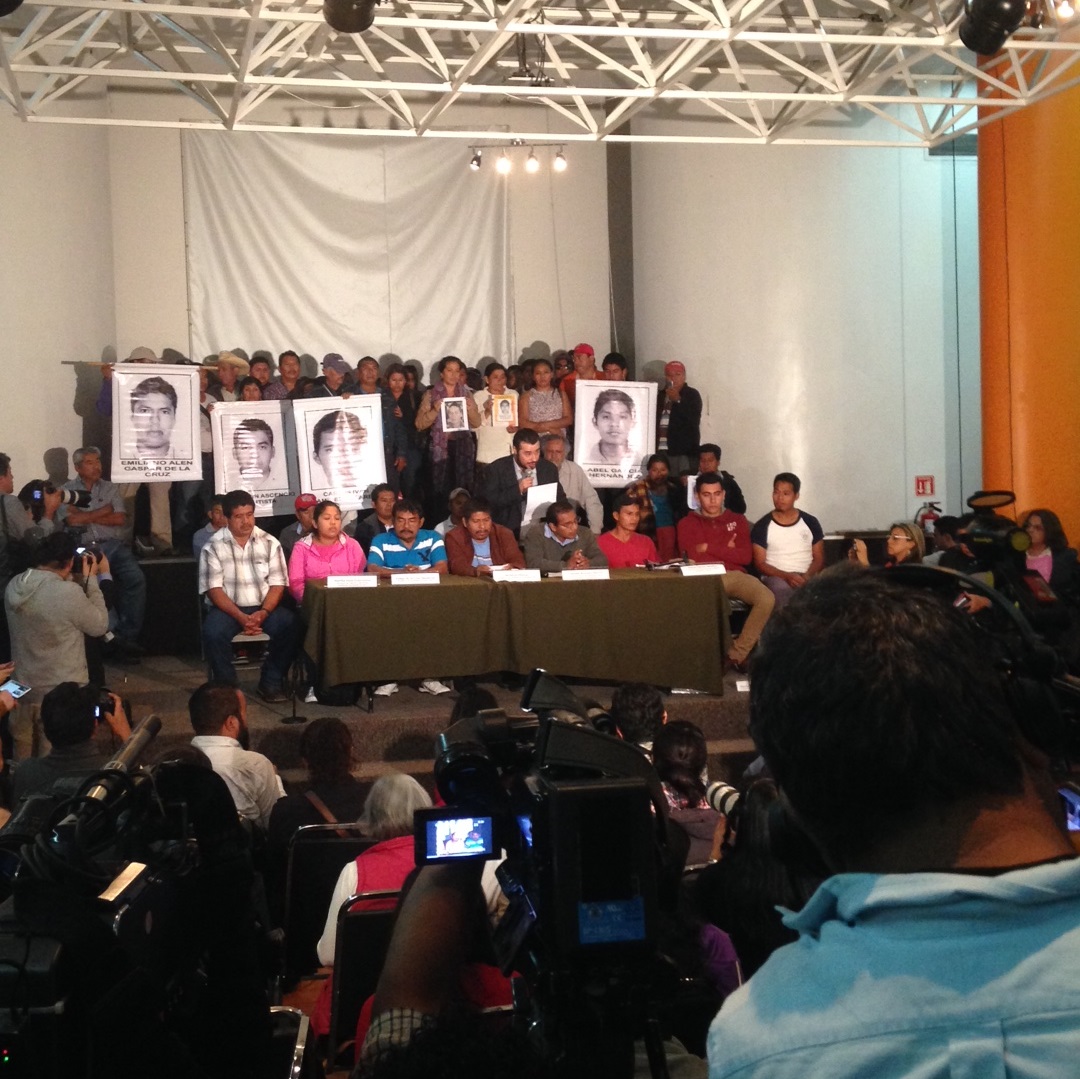 After the murders and disappearance of the students, Iñaky Blanco, head of the Guerrero state Attorney General’s office, confirmed that the violence suffered on September 26th was a result of police’s abuse of force. On October 4th, six mass graves were found containing 28 bodies, none identified as those of the missing students. On October 10th, another nine mass graves were found and since then others have been located. To date, a total of twenty mass graves have been found in the state of Guerrero and yet there is no trace of the students.
After the murders and disappearance of the students, Iñaky Blanco, head of the Guerrero state Attorney General’s office, confirmed that the violence suffered on September 26th was a result of police’s abuse of force. On October 4th, six mass graves were found containing 28 bodies, none identified as those of the missing students. On October 10th, another nine mass graves were found and since then others have been located. To date, a total of twenty mass graves have been found in the state of Guerrero and yet there is no trace of the students.
In Guerrero, collusion among government authorities, drug cartels, organized crime and groups of delinquents is not uncommon. It is the product of corrupt and indifferent state structures militarized by the U.S-supported “war on drugs.” What happened in Guerrero is an example of the political failure of Mexican security forces and the collapse of the institutions of justice. It also derives from the crisis among political parties and the lack of authority and control of public security forces that seem to disregard the people they are tasked to protect.
The problems in Mexico have gone far beyond just drug trafficking, it’s a stable integrated economy among drugs cartels, organized crime and government institutions. There are even documented cases of institutions that are totally co-dependent on organized crime. So the case of Ayotzinapa is not an isolated case, it’s an example of what we live through on a daily basis.”- Maria Luisa Aguilar, Tlachinollan Human Rights Center
Ayotzinapa exposes a bigger issue facing President Peña Nieto and his administration: the yawning gap between talk about human rights abroad and action to support human rights at home. The President’s initial indifference regarding the disappeared students delayed the search effort and clearly contradicted commitments made by the Mexican government to international human rights organizations. Instead of a much-needed coordinated response by federal, state and local government offices to find the students alive, the Mexican public received a half-hearted statement by the President a week after the disappearance outlining tasks the federal government would undertake to find the bodies of the missing—including hiring Argentinian forensic experts.
Putting Pressure on the Mexican Government
Earlier this year, and with input from numerous Mexican women’s organizations including JASS, the international committee charged with monitoring the implementation of the UN Convention on All Forms of Discrimination Against Women (CEDAW) formally asked the Mexican government to respond in writing by August 2014 to the following recommendation: “Develop a systematic official registry of forced disappearances in order to evaluate how widespread the phenomenon is and what appropriate measures should be adopted; [and] revise local penal codes to typify forced disappearance as a crime.”
The lack of documentation and investigation of forced disappearances in Mexico is precisely one of the many reasons why this crime in particular continues to increase and cases remain in impunity, further fueling the country’s human rights crisis. Judging by the silence of the Mexican government in complying with the request of the UN Committee, the recommendations have not been heeded or implemented as of October 2014.
In order to continue demonstrating our concern over ongoing violations of human rights in the country, over the past month, JASS together with Amnesty International, Human Rights Watch, the Inter-American Commission of Human Rights (IACHR), the Organization of American States (OAS), and the United Nations, have made several recommendations to the Mexican government on how to address grave systematic problems and improve the human rights conditions. It’s important that the international community sustain the pressure for answers and accountability so that the government feels compelled to provide solutions and responses to the public’s demands. Students, women, and other activists cannot continue to be victims of the ongoing crises of impunity and injustice in the country.
JASS is joining with allies at home and around the globe to keep the focus on the role of government in the violence and complicity with organized crime. We ask the international community to join with us in demanding that the forty-three school students be returned alive and to join the chorus of voices yelling from the marches, “Ayotzinapa is mobilizing, they took them alive and we want them alive!”
Article written by Catalina Ruiz Navarro

